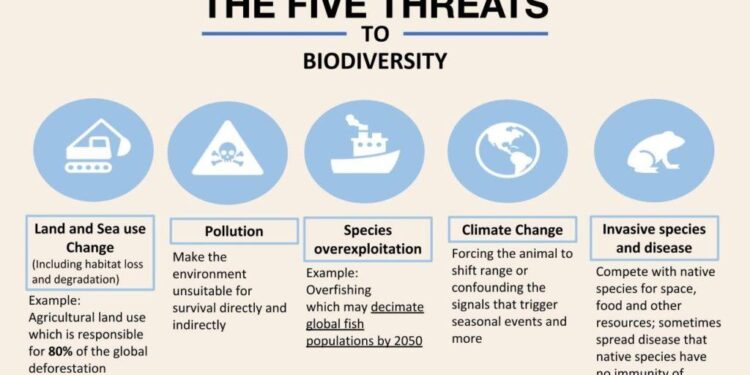New research highlights the complex relationship between our dietary choices and environmental health, revealing that the biodiversity impact of fruit and vegetable consumption varies significantly across different types and sources. As concerns over global biodiversity loss intensify, understanding how our food habits contribute to these changes has become increasingly critical. A recent study featured on Bioengineer.org delves into how distinct agricultural practices, crop selections, and supply chains influence biodiversity, offering fresh insights for consumers and policymakers aiming to promote sustainable eating.
Biodiversity Footprint Differs Widely Across Popular Fruits and Vegetables
Recent studies underscore the vast differences in how popular fruits and vegetables affect biodiversity, revealing that not all produce carries the same environmental burden. Factors such as the land area required, water use, pesticide application, and the impact on native species contribute to these discrepancies. For instance, fruits like avocados and almonds demand extensive water resources and often lead to habitat disruption, while root vegetables like carrots and beets generally exert a lesser footprint.
Key contributors to biodiversity impact include:
- Crop cultivation methods and inputs
- Geographical origin and farming intensity
- Monoculture vs. polyculture farming systems
| Produce | Biodiversity Footprint Score | Water Use (liters/kg) | Land Use (m²/kg) |
|---|---|---|---|
| Avocado | High | 2170 | 3.5 |
| Tomato | Medium | 214 | 2.1 |
| Carrot | Low | 131 | 1.2 |
| Spinach | Medium | 155 | 1.8 |
Study Reveals How Farming Practices Influence Ecosystem Health
Recent research highlights the critical role that agricultural methods play in shaping the health of ecosystems surrounding fruit and vegetable farms. Practices such as crop rotation, organic fertilization, and reduced pesticide use were shown to enhance soil biodiversity and stabilize local food webs. Conversely, intensive monoculture and heavy chemical inputs contributed to diminished populations of beneficial insects and pollinators, disrupting natural ecological balance. These findings underscore the need for sustainable farming to maintain ecosystem integrity while supporting human nutrition.
The study also provides a comparative overview of several common farming techniques and their environmental outcomes, offering valuable insights for producers and policymakers alike. Key factors identified include:
- Soil organic matter retention
- Diversity of pollinator habitats
- Frequency of chemical pesticide application
- Water usage efficiency
| Farming Practice | Ecosystem Impact | Pollinator Presence |
|---|---|---|
| Organic Rotation | High soil fertility, diverse organisms | Strong populations |
| Intensive Monoculture | Soil degradation, reduced biodiversity | Low presence |
| Integrated Pest Management | Moderate chemical use, balanced environment | Moderate populations |
Experts Urge Consumers to Choose Produce with Lower Environmental Impact
Recent research highlights the growing importance of consumer choices in shaping the environmental footprint of fruit and vegetable consumption. Experts emphasize that not all produce carries the same ecological burden; factors such as cultivation methods, water usage, and land conversion rates dramatically influence biodiversity outcomes. By prioritizing items grown with sustainable practices and lower resource demands, consumers can play a pivotal role in preserving delicate ecosystems and reducing habitat loss globally.
To guide shoppers toward more sustainable options, specialists recommend focusing on:
- Locally sourced and seasonal produce to minimize transportation emissions and support regional biodiversity
- Fruits and vegetables cultivated using agroecological or organic methods that promote soil health and pollinator activity
- Low-impact crops with efficient water use and minimal pesticide reliance
| Produce Type | Water Use (L/kg) | Habitat Impact |
|---|---|---|
| Tomatoes | 180 | Low |
| Almonds | 4,100 | High |
| Spinach | 120 | Moderate |
In Summary
As the conversation around sustainable eating continues to evolve, this latest research underscores the complex relationship between our dietary choices and biodiversity. The findings from Bioengineer.org illuminate how the impact of fruit and vegetable consumption on ecosystems is far from uniform, urging consumers, producers, and policymakers alike to consider nuanced approaches in promoting environmental stewardship. Moving forward, balancing nutritional needs with ecological preservation remains a critical challenge-one that demands informed decisions at every level of the food supply chain.































